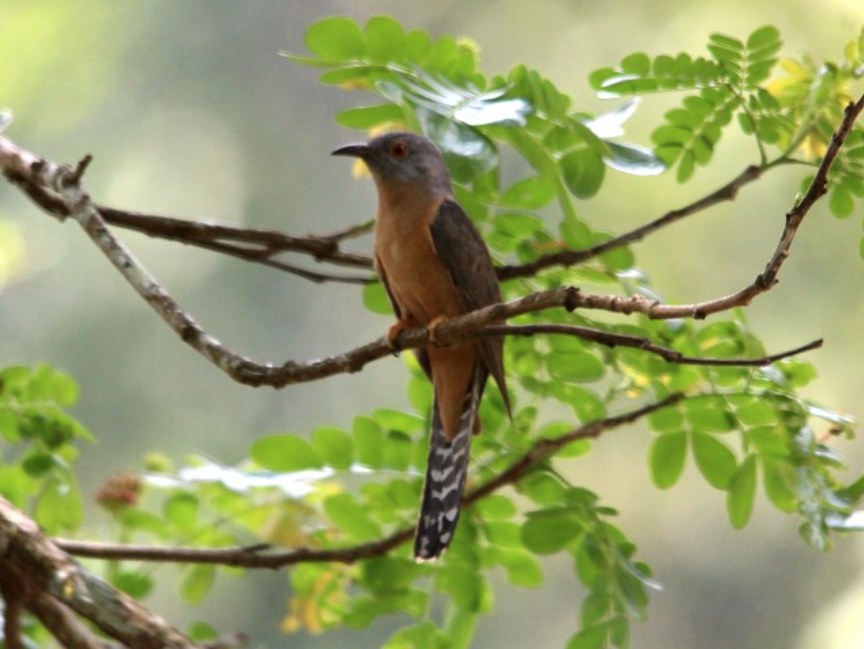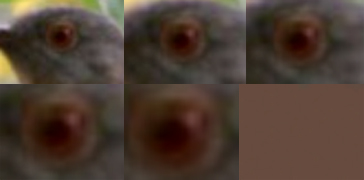Mike Kilburn’s third question to the first post in this series was:
How to manage atypical/contradictory plumage/bare parts/call that do not fit the classic/typical description?
I’d like to use the quiz I posed at the end of the last post to help address this question. My challenge was: Take a close look at this picture and tell me what colour the eye-ring is!

This bird was identified as a Rusty-breasted Cuckoo on account, I suspect, of the orange extending up to the throat. On Plaintive, the throat and breast are usually grey. One of the key distinguishing features of these two species at all ages is the colour of the eye-ring – greyish or greyish-brown in Plaintive and yellow in Rusty-breasted.
So what colour is the eye-ring of this bird? The answers I got from various respondents were: dull yellow, orange yellow, pinkish and pale grey – quite a variety! In the last post I said that we tend to be particularly bad at judging pinks, oranges and yellows, and this seems to prove my point!

Maybe those of us who thought the eye-ring was yellow or orange were looking at the contrast between it and the red eye. Or maybe, since the bird is labelled a Rusty-breasted Cuckoo, we knew the eye-ring ‘should’ be yellow, and were influenced accordingly?
So, the eye-ring does not appear to be yellow. A contradictory bare part detail which does not fit the typical description. What do we do with that?
Look at the whole bird!
I’ve lost count of the number of times I’ve heard or seen people identify a bird based on a single, supposedly diagnostic plumage trait. I’ve done it myself. It’s a recipe for disaster. Don’t do it!
What about the rest of the bird? The grey head and chin grading into the rich peach-orange throat and underparts looks good for Rusty-breasted and not Plaintive. The wings are browner than the head, which is not particularly helpful, since both species share this feature. Ditto, the orangey-yellow feet. The undertail shows broad whitish bars which go across the whole feather, a feature of Plaintive Cuckoo, but not adult Rusty-breasted, which has much smaller whitish notches along the edges of the tail feathers.
So, despite the anomalous peach-coloured underparts extending up to the chin, this bird must be a Plaintive Cuckoo. My thanks to Ingkayut Sa-ar for pointing this out to me – I can’t say I would have picked it out otherwise.
In general, atypical characteristics in a bird which you think you know the identity of should set off alarm bells. They may be explainable, and your original identification may be right, but it is always worth double-checking and taking a cautious approach.











